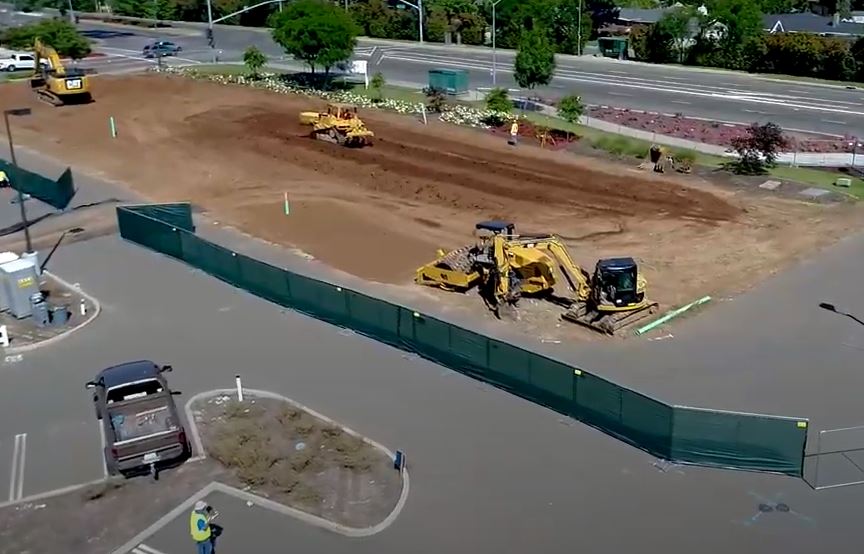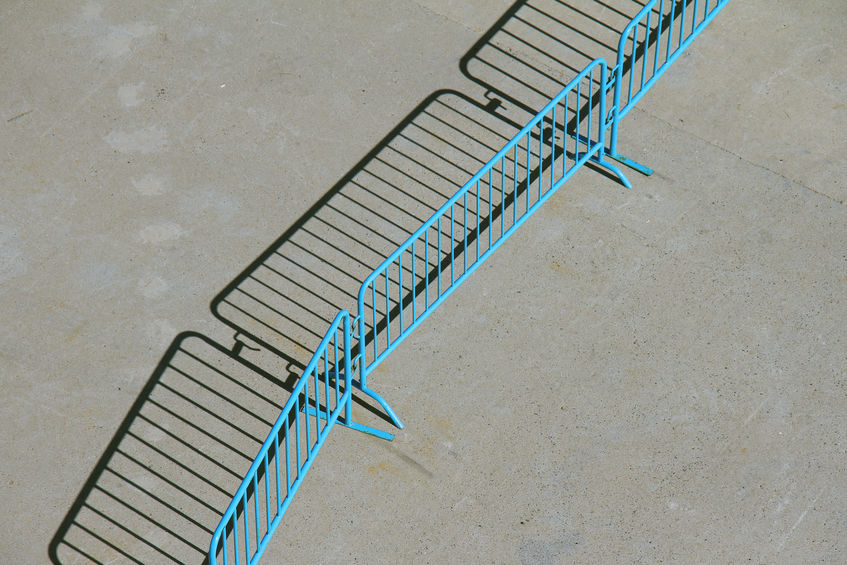When it comes to building sites, there are several variables to consider when selecting a temporary construction site fence in New Jersey. The decision largely relies on the nature of the work. The location of the job, as well as municipal restrictions limiting the usage of temporary fence for construction sites, are other considerations. Construction in residential regions differs significantly from that in commercial ones. As a result, the most appropriate temporary barrier for various building sites will differ.

Temporary fences for building sites come in a variety of styles. As previously stated, the sort of fence used at each location will differ. The most prevalent types of temporary fences used on building sites today are listed below.
What are the different types of temporary fencing?
Temporary site fencing: Tall mesh panels that are clamped together, often around the perimeter of a site, make up temporary site fencing.
Temporary edge protection: consists of robust, inflexible steel fence panels that are bolted to the edge of pits, lift wells, and the concrete deck edges and dropoffs.
Crowd control barriers: Low link together steel panels that are used to create pathways or pedestrian thoroughfares, as well as cordoning off tiny hazards, are utilized as crowd control barriers.
Temporary fence types
Temporary fence is available in a variety of styles to suit a variety of requirements. Determine your temporary fencing needs and objectives before renting or buying it. Are you merely seeking a solution for an aesthetic barrier, or do you want extra safety and security to keep intruders out? The most typical forms of temporary fencing to think about are:
Barricades are erected to keep people out.
Barricades are less heavy and shorter in length than fence panels, making them easier to place. They’re also composed of galvanized steel, which is extremely durable. When needed, their strength stands up to crowds, although they’re still rather light. Barricades are also known as “bike fencing” because they can be used as temporary bike racks.
Barricades are a popular sort of temporary rental fence in today’s market. Barricades are used to prevent vehicles from approaching construction sites and can be seen at major events such as carnivals, festivals, and parades. This protects property owners’ premises from vandalism and theft.

They are frequently used in conjunction with other types of temporary fences to provide various levels of protection to building sites.
Temporary barricades are simple to connect to form the desired barrier. This means they’re simple to erect and dismantle, even for one-day events. Use them to create borders for races, concerts, and other events where spectators need to be able to watch but not be in the middle of the action.
What are the best uses for crowd control barriers?
Where big 1.8m high panels would be overkill, certain projects call for temporary pedestrian fence. Crowd control barriers are the ideal option in this case.
These low pedestrian fences are comprised of galvanized steel tube panels with a simple double pin mechanism that lock together. Each panel has low-profile galvanized steel feet that fit into the bottom. Crowd control barriers are light, portable, and simple to erect and dismantle.
They’re great for managing pedestrian areas, providing safe walkways on the job site, enclosing out-of-service machinery or equipment, and enclosing minor risks.
Temporary Chain Link Panels
This is another sort of temporary fence that is commonly used in residential, commercial, and industrial building sites. As a result, this form of fence is a safe bet for your location. It’s a simple and quick solution that may also be utilized for crowd management and added security in retail establishments.
Due to the fact that they are panels, they can be fitted in a variety of configurations to suit one’s needs. Because the method of installation makes use of free-standing platforms, there is no need to drill holes for installation. This is perhaps why most people choose to utilize these temporary walls in locations with concrete, asphalt, or pavement already in place. They’re also preferred in places where physical modifications to the environment are frowned upon.

Another feature that makes chain link panels popular on construction sites and at events is that they are built of robust materials, making them both sturdy and durable. Our construction site temporary fencing in New Jersey is composed of a heavy-duty frame with a horizontal and vertical cross to provide the highest quality for our clients.
Fences made of traditional chain link
The primary distinction between a chain link fence and a chain link panel is the way they are installed and the material they are constructed of. The chain link fence, unlike the chain link panel, is merely a roll of wire that is usually supported by poles sunk into the ground. While it takes a little longer to install than chain link panels, it provides additional protection for construction sites.
Any building site, whether residential, commercial, or industrial, can benefit from chain link fencing. Property owners prefer them because of their accessibility, durability, and cost. Furthermore, their flexibility can be customized according to a client’s requirement, which makes them a popular choice. Even better, a wind screen or plastic strips can be added to the fence to reduce visibility into a building site, which would contribute to preventing crime on the jobsite. Several studies have found that when visibility reduces, vandalism lowers as well.
Temporary orange fencing
This type of fencing is made of a durable plastic mesh that alerts people to stay clear of locations where heavy machinery or other dangerous instruments may be in use. Check the laws in your area. As a lightweight alternative to fencing panels, you might be able to use orange fencing. You might wish to use this in addition to a sturdier type of fencing if you have a large or complex site. In any case, it is an effective solution to ensure sure your staff and others are kept out of construction zones.
Edge protection fencing
Temporary edge protection fencing is made of robust steel with a kick plate on the bottom and a rolled edge on the top and bottom. As it is commonly employed on multi-story building sites, this serves to prevent tools or small items from rolling underneath the fence and posing a hazard to employees below. This fencing complies with AS/NZS 4576 “Guidelines for Scaffolding” and is suitable for off-the-ground use.
During construction, the panels clip on to the edge of concrete decks and drop offs with a particular type of steel post.
Protect voids, drop-offs, edges, and other no-go locations by erecting a protective barrier. It’s a robust temporary fencing solution that’s perfect for erecting around excavations and work sites, protecting scaffolding edges, and to warn people of risks.
Temporary edge protection fencing can be used in deep excavated pits, as scaffolding edge protection, underground as drop-off protection, and surrounding lift wells.
Factors to Consider When Choosing Temporary Fences
Any temporary fence used on a building site should be capable of preventing unwanted entry to the property. This protects the work site from vandals, robbers, and other forms of damage. Outside parties are also protected by a temporary fence. If someone is hurt on the property after hours, lawsuits might be brought, putting the property owner in a legal battle. People will not be damaged by working equipment and materials, or worse, by falling boards and beams, if the site is surrounded by a fence.
Consider renting temporary fencing
Safety is normally your main priority on construction sites and at festivals. Temporary fencing is an important part of any safety plan. Fencing is deemed so crucial to a construction site’s safety that it is mandated by state and federal legislation. It also reduces your liabilities and insurance expenses in the event of an accident.
Outdoor activities benefit from temporary fences as well. Set up parameters for the event by renting event fence to ensure that only paid or invited visitors attend.It also aids with crowd management. Not only does temporary fence keep people safe, but it can also be used to separate VIP areas, keep lavatories more private, or protect performers from overly enthusiastic fans.
Is there going to be alcohol at your event? You may be required by local and state laws to fence off areas where alcohol is served. Make sure you follow the rules and have the correct fence.
Whatever sort of temporary fence you choose, it will improve the safety and security of your job site or event. Renting temporary fence rather than buying it saves money because you only pay for what you need when you need it.
When choosing temporary fencing, keep in mind the type of work being done as well as the legal consequences of temporary fences and construction sites. It’s important to keep in mind that different types of fences can be used for various purposes on the property. If you’re not sure what’s ideal for your property, you can always contact one of our customer service representatives, who will be happy to help you figure it out.
